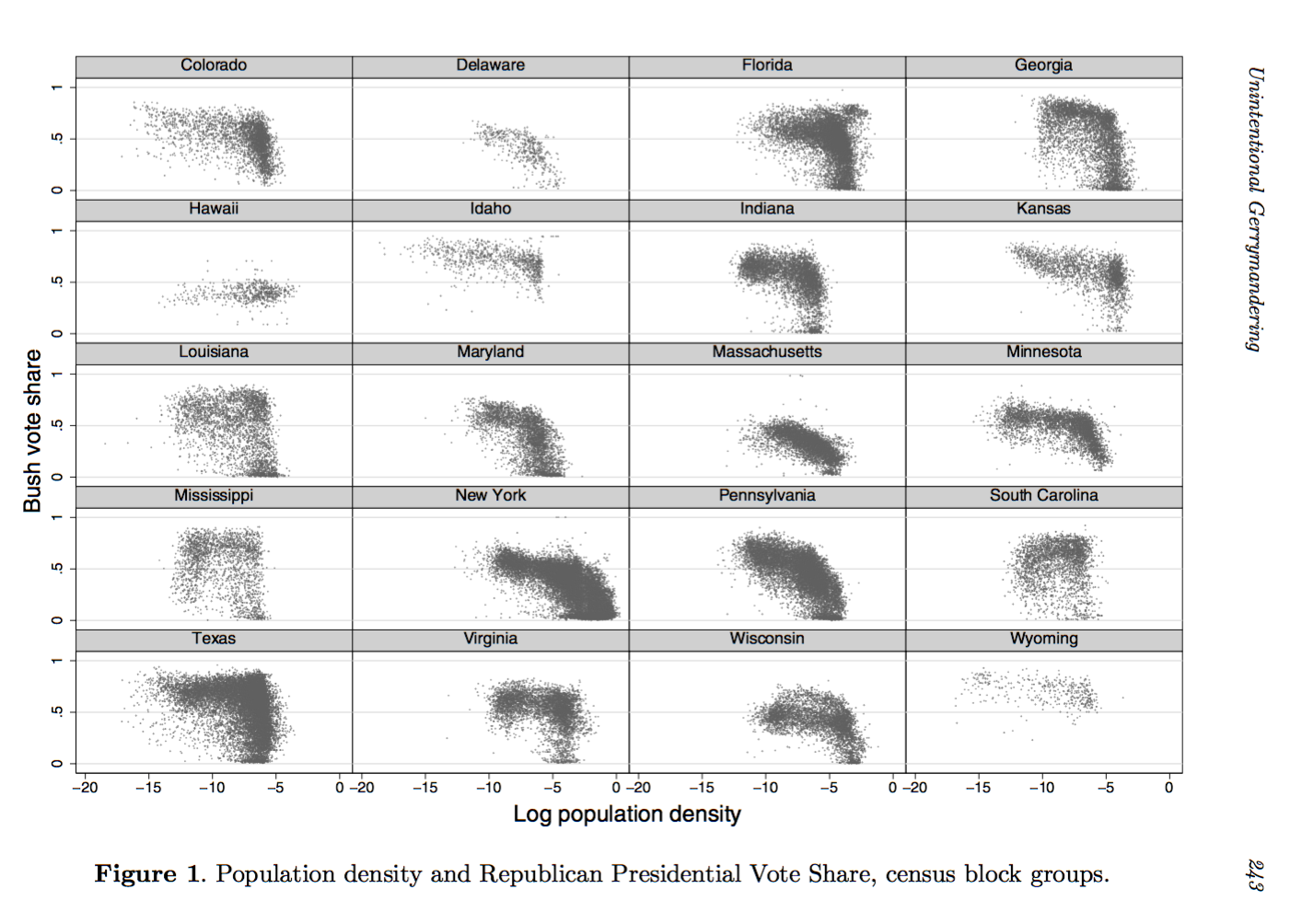Papers and Links
Articles
Overview
Levitt, Citizen’s Guide to Redistricting
Markov chains
Peres et al, Markov chains and mixing times
Aldous and Fill, Reversible Markov Chains and Random Walks on Graphs (this is a not-quite-final version. see table on p169, where τ_1 is the mixing time)
Compactness taxonomy (comes with no warranty)
Niemi et al, “Measuring Compactness…”
A guide to the role of compactness in the 1990s Supreme Court cases (the “Shaw line”)
Pildes and Niemi, “Bizarre Districts”
Communities of interest
Gardner, “Representation without Party” (see esp. footnotes on p58 of PDF for case law)
Gardner, “…Political Community”
Spatiality/clustering and representation
Cottrell, “A Geographic Explanation for Partisan Representation”
Chen and Cottrell, “Evaluating partisan gains from Congressional gerrymandering…”
Chen and Rodden, “Unintentional gerrymandering….”
Reports and related papers
Some sampling papers and reports to see how they handle penalties/objective functions
Mattingly et al, North Carolina
MGGG’s Santa Clara report, with some analysis of minority population clustering
Links to interactive things
Experiment with all the ways to district a 2×3 grid: spreadsheet
Doug Spencer’s EI app (Version 1.5)
Some interesting shapefiles
Pennsylvania
(search “shapefile” in page to find plans)
- “Legislative Respondents” = Turzai-Scarnati, the 2018 Republican Leg plan
- “State Democratic Caucus” = 2018 Democratic Leg plan
- “Governor Wolf Shape Files” = 2018 Governor’s plan
- “Remedial Plan” = special master Persily’s independent plan, which was actually enacted
North Carolina
- 2016 Republican Leg plan
- 2016 bipartisan Judges Plan (prepared and shared by Jonathan Mattingly’s team at Duke)
